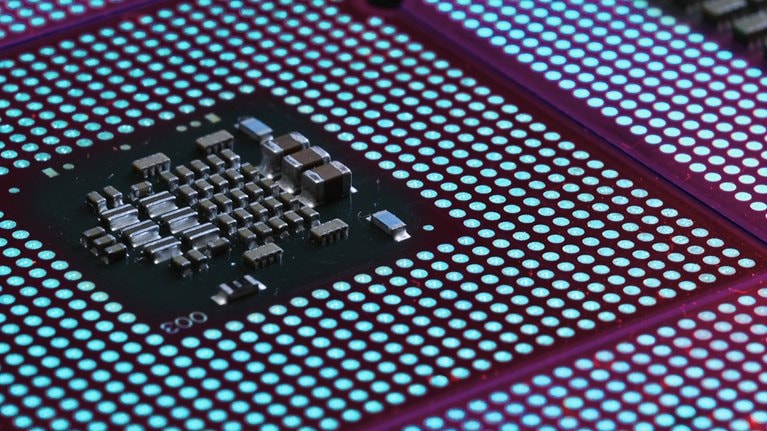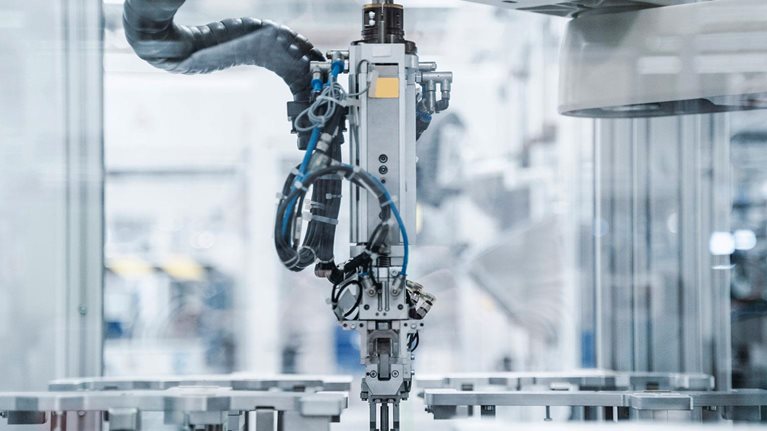In the months after the coronavirus began to spread, semiconductor companies moved decisively to protect employees, secure supply chains, and address other pressing concerns. Although the situation is still serious and many governments are still imposing physical-distancing requirements, semiconductor leaders are now looking ahead to the time when the pandemic abates and the next normal begins. To prepare for that moment, they are thinking about strategies for reimagining and reforming their business models—two activities that McKinsey described in a framework for responding to the coronavirus.
Every aspect of the business model could be subject to change, including the composition of product portfolios, capital expenditures (capex), R&D strategy, demand forecasts, supply-chain footprints, production decisions, and options for mergers and acquisitions (M&A). But with so much uncertainty ahead, semiconductor companies may have difficulty making strategic decisions. To move forward, they should first establish a solid baseline for their company (see sidebar, “Determining the starting point,” for more information on this topic). With this foundation, semiconductor companies can chart a path to the next normal by focusing on the following questions:
- What recovery scenarios are most likely, considering evolving demand, economic developments, and other global changes?
- What is the impact of the COVID-19 crisis on long-term trends and demand?
- How can we emerge even stronger from the crisis?
In past downturns, companies that thought about strategic questions early in the crisis were most likely to recover quickly and become market leaders. Although the COVID-19 pandemic is unprecedented in modern times, the need for long-term planning still holds true.
Developing recovery scenarios
COVID-19 has significantly altered the fundamentals of the sector, including customer behavior, business revenues, and numerous aspects of corporate operations. Many companies have unclear future prospects, and some may not survive the crisis. Multiple recovery scenarios are possible, depending on potential government interventions and other variables that are now difficult to predict.
Earlier, we published an article about the short- to medium-term outlook for semiconductor demand. Our analysis was partly based on assumptions in two of the nine scenarios that McKinsey developed for the COVID-19 recovery, both of which assume that the spread of the coronavirus is eventually controlled and catastrophic economic damage is avoided. In the first scenario, termed A3, global gross domestic product (GDP) recovers in the fourth quarter of 2020; in the second, termed A1, recovery is delayed until late 2022. Since the original analysis, we have updated the estimates to include 2021 demand.
Both recovery scenarios suggest that most semiconductor segments will experience negative year-on-year revenue growth in 2020. Looking ahead to 2021, however, we expect that the situation will improve as most end markets recover, mostly because the starting point for 2020 will be much lower than it was in previous years. In the more optimistic A3 scenario, only a few segments meet the growth expectations that were forecast before COVID-19 emerged by 2021 (Exhibit 1). In the more pessimistic A1 scenario, the number of segments that recover is even lower (Exhibit 2). Within the individual segments, a few trends stand out:
- PCs. This segment will see the sharpest drop in demand and the performance gap will become more serious over time. Most people will buy all the home-office electronics that they need for remote work in 2020, lowering demand for next year. Meanwhile, enterprises may continue to delay investments in PCs to control expenditures, even if the recovery is proceeding.
- Automotive. In the more optimistic recovery scenario, A3, the automotive segment sees year-on-year growth of 28 to 36 percent in 2021. This estimate is based on the assumption that governments will offer incentives to car buyers. In A1, the scenario with the delayed recovery, government incentives are not as strong and growth remains in the 1 to 5 percent range.
- Wired communication. Growth in this segment could exceed pre-COVID-19 forecasts in both 2020 and 2021. This is one of the few areas where a delayed recovery would actually contribute to higher growth than the more optimistic scenario, since continued remote work and homeschooling will stimulate demand for wired communication.


Evaluating the impact of the COVID-19 crisis on long-term demand
Beyond 2021, semiconductor companies may have more difficulty predicting demand because even greater uncertainty abounds about healthcare and business developments. As companies create long-term plans and evaluate potential scenarios, trends in two areas deserve particular attention.
Market pull
Over the past few months, people around the world have experimented with new ways of working, studying, and communicating through videoconferencing and other technologies. Such trends could have a lasting impact on semiconductor demand and open new possibilities for existing products and services. For example, demand could increase for semiconductors that enable servers, connectivity, and cloud usage as online collaboration grows. Semiconductors may also be in high demand for the following products and services:
- contactless solutions, including touch screens and elevator buttons
- ambient assisted-living devices, including sensors, that help elderly and chronically ill patients remain in their homes, rather than moving to facilities
- automated-delivery solutions for the last mile, such as robots and drones
- digital work processes and the Internet of Things, especially in lagging sectors, such as healthcare, government, and defense
Of course, COVID-19 could also decrease semiconductor demand in several important areas. Some automotive makers have already begun to postpone investment in autonomous driving because their lower revenues meant that less funding is available for R&D. In other areas, demand trends are difficult to predict. Looking again at mobility, it is clear that public transportation is now less popular because people fear viral transmission. If subway and bus ridership remains low, or if more people begin to purchase private cars, semiconductor demand could shift in response.
Monitoring industry shifts and geopolitical responses
On the supply side, the pandemic has exposed risks that were previously unrecognized, leading to potential shortages of critical parts and components. In response, many semiconductor companies are already reconfiguring their supply chains to improve resiliency, and the changes may continue into the next normal. As they plan ahead, semiconductor companies might want to create scenarios that show the potential impact of localizing production, increasing stock and inventory levels, or making other changes.
Within plants, the COVID-19 crisis could accelerate automation and the adoption of Industry 4.0 technologies. Remote manufacturing, diagnostics, and maintenance could all become permanent features. If that occurs, semiconductor companies might become smart workspaces, with technologies that facilitate remote work for most employees. They might also encourage a hybrid model in which a certain number of employees are remote and the rest remain on site. The efficiencies gained through such changes, as well as their start-up costs, could influence future semiconductor revenues.
Would you like to learn more about our Advanced Electronics Practice?
Long-term scenario planning must also consider the geopolitical response to the COVID-19 crisis. To stimulate the local economy, several governments have already announced subsidies and incentives, but these often vary by region. China for example has announced extended state subsidies and tax breaks for consumers purchasing new electric vehicles, while the United States has reduced fuel-efficiency standards for automakers. Semiconductor companies should closely track such regional variations, since they may affect demand patterns, and note whether local government responses appear to be evolving.
Emerging stronger from the crisis
Semiconductor companies have developed effective crisis-management strategies during other difficult periods, including the dot-com bubble in 2000 and the Great Recession of 2008. But the COVID-19 crisis presents entirely new challenges that make it different from any previous downturn. It hit unexpectedly and has exacted an immense humanitarian toll in addition to causing economic hardship. Although no playbook exists for such a crisis, some lessons from past downturns may apply if semiconductor players want to emerge stronger in the next normal.
Modestly reducing capital expenditures
Intel’s cofounder, Gordon Moore, once observed, “You can’t save your way out of a recession.” Large capex reductions are unavoidable if companies need greater liquidity to survive a crisis. But for companies in a better financial position, experience suggests that enormous cuts may not be the best strategy. During the Great Recession, many of today’s leading companies reduced capex less than their competitors and thus were better positioned to prepare for growth once the economy began to recover. With the current crisis, companies that proceed with plans to create next-generation products, purchase equipment, or make similar investments will be prepared if demand surges as the economy recovers. Those that hold back may have difficulty catching up, since some improvements can take years.
Focusing R&D budgets on next-generation products
For maintaining a strong R&D strategy during a crisis, three actions can be critical:
- Limiting cuts to R&D budgets. As with capex, research shows that top companies tend to make moderate R&D cuts during a downturn, allowing them to sustain a rich and evolving product portfolio. Unless liquidity issues require more significant cuts, companies should strive to fund innovation, rather than setting the bare minimum budget needed to keep R&D running. Those companies that retain their focus on R&D innovation now could gain long-term advantage over competitors, given the often lengthy timelines for developing new products. In some cases, the lagging competitors may never close the innovation gap.
- Focusing on next-generation products. Although semiconductor customers might be limiting their spending now, demand for new and innovative products could surge once the economy begins to recover. Rather than simply improving products using current state-of-the art technology, companies should also invest in next-generation products using new technologies. They may not generate revenue from these products over the next 12 to 24 months, but they will be well positioned once customer demand surges.
- Keeping a close eye on trends. Forward-thinking semiconductor companies will try to determine what products will generate the highest demand post-COVID-19 and prioritize their R&D investments accordingly. Their analysis should encompass all areas, from new manufacturing techniques that allow for smaller process sizes to more innovative sensors. To make the right decisions, semiconductor companies must closely monitor new trends and customer behavior. If unexpected market shifts occur, they may need to take a new course.
Taking a strategic approach to mergers and acquisitions
Semiconductor companies may also emerge stronger from the COVID-19 crisis if they take a strategic, systematic approach to investment and divestment. A retrospective, cross-industry analysis of 1,000 businesses shows that today’s top 100 companies were 10 percent more likely to undertake programmatic M&A—the regular pursuit of modestly sized deals—both during and after the Great Recession (Exhibit 3). For divestment, the top 100 companies also unloaded 1.5 times more assets than their peers during the downturn. Another striking finding: the top companies also were more likely to pursue smaller deals. Overall, their average deal value was about 9 percent lower than that of competitors.

A programmatic approach to M&A is well-suited to the current era, since governments may implement stricter controls on large deals to limit foreign investment. It is possible that some protections may even extend to smaller deals to protect local businesses from hostile takeovers by international companies, so semiconductor players must examine regional regulations closely before proceeding with any M&A activity.
The world will be a different place after the COVID-19 crisis, and we do not yet know the extent of the changes within business, healthcare, and society as a whole. With so much uncertainty ahead, semiconductor companies will benefit by creating multiple future scenarios, each showing different macroeconomic and virus-related outcomes, as they set their strategy for coming years. They should embrace the uncertainty as part of their operating model, since agility and the ability to adapt quickly will be far more important than sticking to a plan. As in previous downturns, those semiconductor companies that act quickly could emerge stronger. Modest capex cuts, a focus on R&D innovation, and a programmatic approach to M&A could help them capture growth and create leading-edge technologies that will be in high demand once the economy begins to recover.


